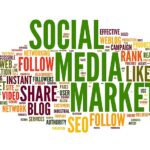As an inventor or product developer, your mind overflows with ideas that could revolutionize the world. However, the journey from ideation to a successful product can be a roller-coaster of learning, discovery, and resilience. This article will navigate through the complexities of this thrilling voyage, offering valuable insights and tips on the fundamental aspects to help you turn your invention into a profitable enterprise.
Idea Validation
In the beginning, there’s an idea – your groundbreaking invention. However, before proceeding further, it’s imperative to validate its potential. Market research, surveying your target audience, and analyzing competitive products will help establish your idea’s viability.
Prototype Development
Once you’ve validated your idea, the next step is to build a prototype. This tangible representation of your product will enable you to spot potential flaws, demonstrate functionality, and share your vision more effectively with others.
Intellectual Property Protection
You’ll need to protect your intellectual property rights to ensure you maintain control over your invention. This often involves filing for a patent, a process that can be complex and time-consuming but offers exclusive rights to your original concepts and designs.
The Patent Process
To acquire a patent, you’ll need to submit an application to the United States Patent and Trademark Office (USPTO) or your respective national patent office. The process includes comprehensive documentation of your invention, a patent search to ensure its novelty, and potentially, engaging a patent attorney for professional guidance. Patience is key here, as this process can take several years.
Funding Your Idea
Every invention needs capital to transform into a viable product. Here, you have multiple routes: self-funding, seeking investment from venture capitalists or angel investors, crowdfunding, or applying for business grants and loans. Remember, securing funding often requires a solid business plan and a convincing pitch.
Product Development
Now that you have the necessary funds and a protected idea, it’s time for product development. This step includes refining your prototype, optimizing product design, and developing the final product. You might need to collaborate with engineers or designers during this phase.
Regulatory Compliance
Ensuring your product meets all relevant regulatory standards is paramount. Different industries have different regulatory bodies and standards, ranging from safety measures to environmental regulations. This step may necessitate collaboration with legal experts or consultants who specialize in your industry. Compliance builds consumer trust and safeguards your business from potential lawsuits and penalties.
Finding a Manufacturer
Next, you’ll need to find a reliable manufacturer to produce your invention. Platforms like RIVIR help product developers connect with manufacturers, so consider starting there. You should consider factors such as cost, quality control, and the manufacturer’s track record.
Marketing and Branding
Effective marketing and branding are crucial for your product’s success. Identify your target audience, choose the right marketing channels, and create compelling branding strategies. Digital marketing is an especially powerful tool for brand visibility and audience engagement.
Sales and Distribution
Once your product is ready, it’s time to get it into the hands of consumers. In addition to helping you connect with manufacturers, the previously mentioned RIVIR platform can also help you find and work with retailers. With that said, the retail world is vast, so you will need to narrow down your options according to the nature of the product. Will it be sold in supermarkets, hardware stores, novelty shops, online, or all of the above? You’ll also need to consider distribution strategies that align with your business model and target audience.
Customer Service and Relationship Building
Finally, never underestimate the power of excellent customer service and nurturing customer relationships. Satisfied customers can turn into brand ambassadors, playing a pivotal role in the success of your product.
Scaling Your Business
As your product gains traction, consider scaling your business. This could involve expanding your product line, entering new markets, or diversifying your distribution channels. Strategic planning and careful financial management are vital during this growth stage. Additionally, stay agile and open to feedback, as it can offer crucial insights for your expansion plans. Remember, the key to successful scaling is maintaining quality while increasing output.
Conclusion
The journey of turning an invention into a successful enterprise is undoubtedly demanding and filled with challenges and roadblocks. But as the saying goes, ‘nothing ventured, nothing gained.” With a sound understanding of the process, coupled with resilience and dedication, you can navigate this journey skillfully. Embrace each step as an opportunity for growth, and remember, every successful product in the market today began as a mere idea in the mind of an inventor, just like you.
Image Source: BigStockPhoto.com (Licensed)
Related Categories: Work, Reviews








